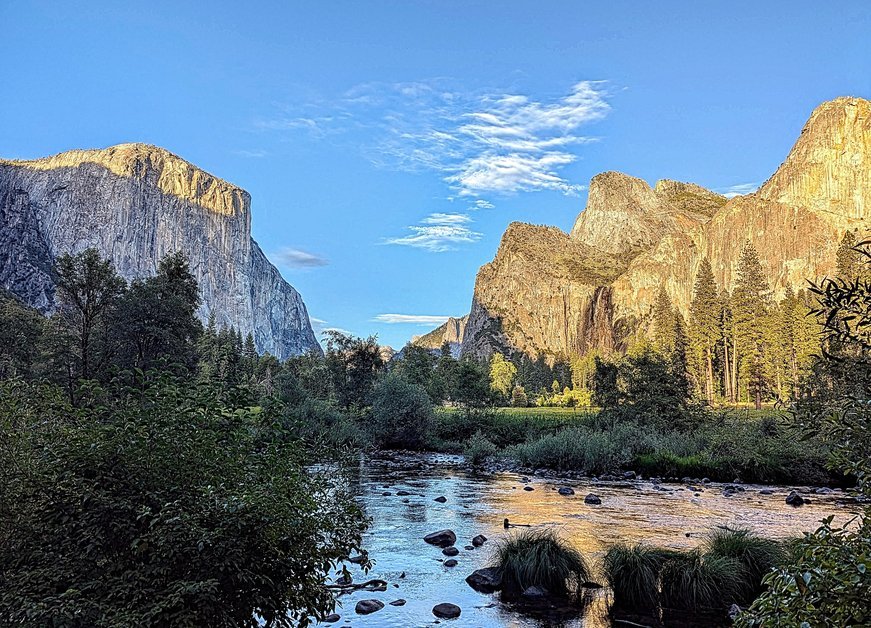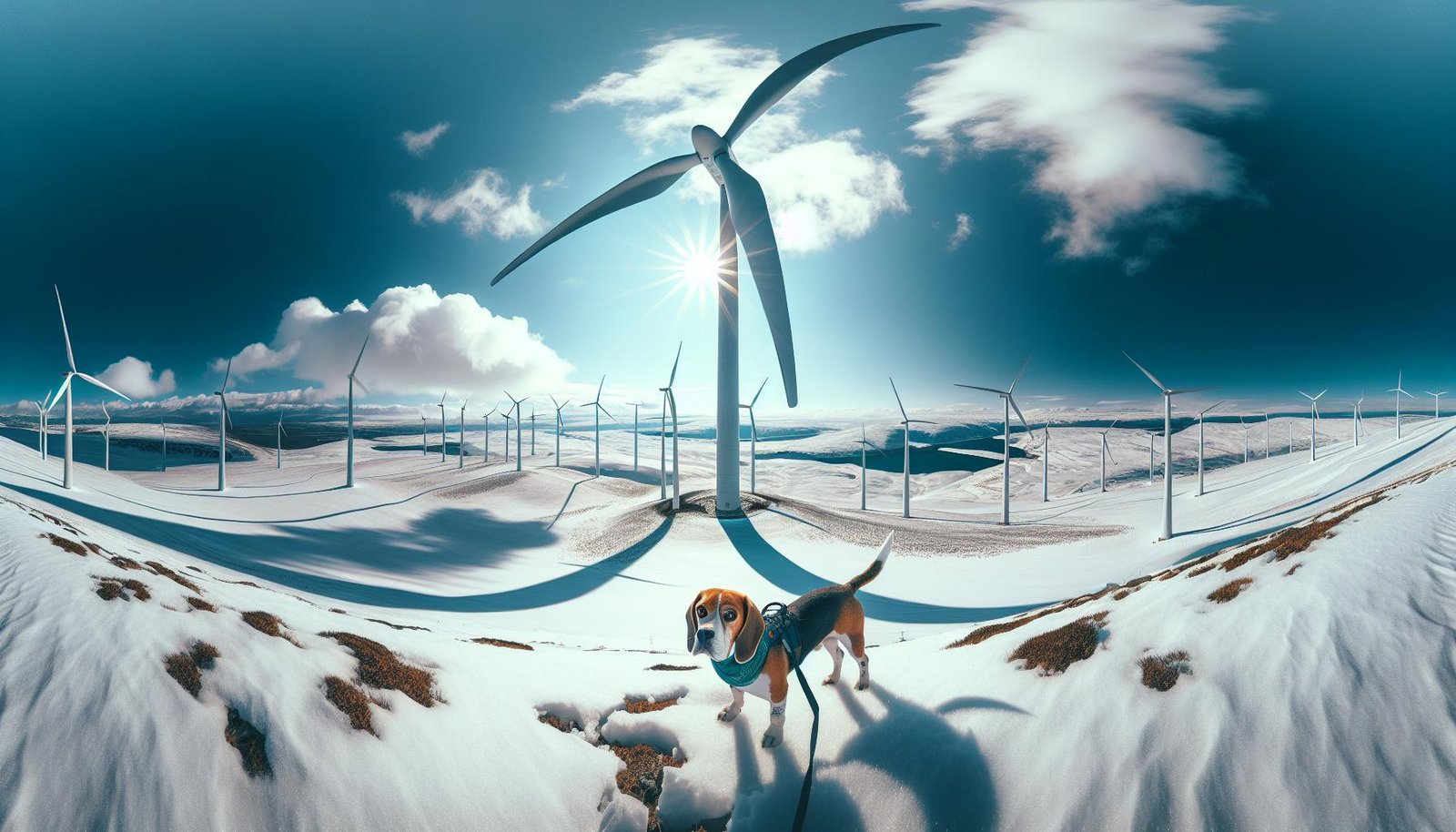Yosemite National Park attracts over 4 million visitors a year, and we have visited it at least three times in all seasons. Today’s trip in the heat of summer reminded us why planning matters. While its stunning granite cliffs, thundering waterfalls, and vast meadows inspire awe, summer visits sometimes turn the magic into a maddening challenge. In this post, we share our firsthand experiences and lessons learned at Yosemite National Park to help you plan a visit that suits your style.
Why Yosemite National Park Remains a Must-Visit Destination
Yosemite National Park offers timeless beauty that captivates nature lovers of all ages.
- Breathtaking natural wonders
- Rich history and natural formation
- Unmatched scenic drives and photography opportunities
We have seen Yosemite transform through the seasons. Its iconic landmarks like Half Dome and El Capitan never fail to impress. Visiting the park gives you a glimpse into the geologic forces that shaped our landscape over millions of years. Our experiences include staying with our camper trailer at Thousand Trails Yosemite Lakes—a convenient base that enhances the appreciation of this grand landscape.


Yosemite’s iconic Tunnel View
We found that the magic of Yosemite lies not only in its grandeur but also in its simplicity. A walk along paved paths and rest stops provide ample moments to reflect on nature’s power and beauty. Casual encounters with fellow visitors remind us that while the park can feel crowded, its vast landscapes ensure there’s always a quiet corner to enjoy. For more dog-related insights from our visits, check out our article Visiting Yosemite National Park with Dogs: A Guide for Pet Owners.
Navigating the Crowds in Yosemite National Park
Yosemite’s popularity can be overwhelming during peak season.
- Heavy traffic jams
- Packed parking lots and trails
- Limited quiet spaces
During our latest summer trip, the number of visitors transformed peaceful trails into bustling walkways. The roads leading into the park experienced gridlock, and finding a parking spot near popular sites proved nearly impossible. We spent hours circling the parking lots near Yosemite Falls and Glacier Point before finding a distant spot that added stress to our visit.
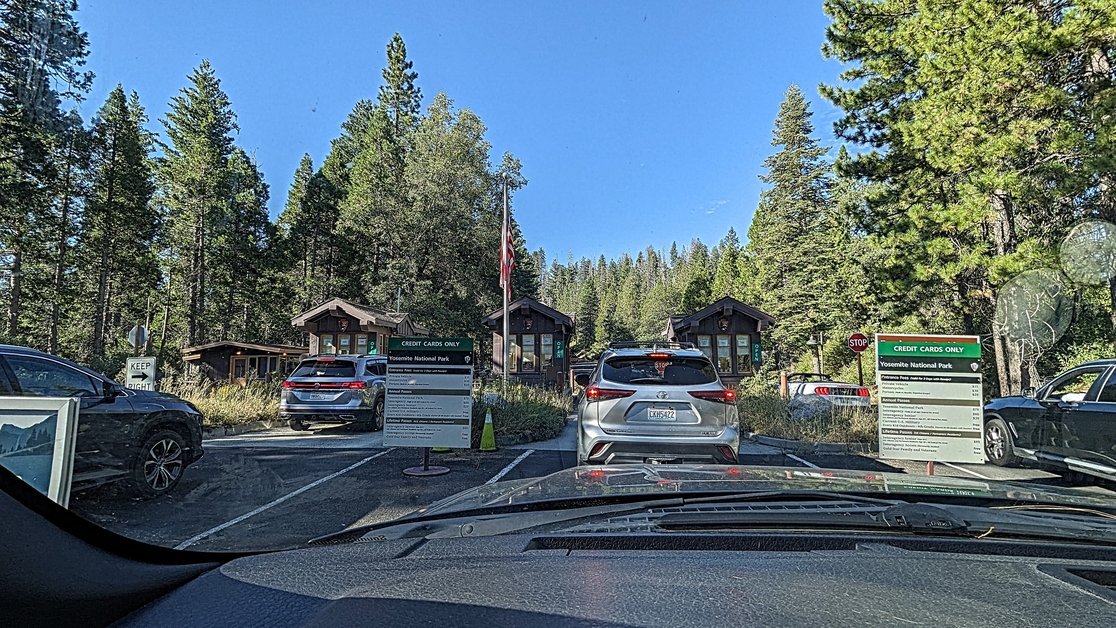
Crowded parking lots at Yosemite
To navigate the crowds, consider visiting during early morning hours when fewer people are around. Using public shuttles where possible can also ease the parking dilemma. Additionally, planning your itinerary with flexible timings helps—if one site is too crowded, explore another part of the park instead. We recommend reading Why You Should Think Twice Before Visiting Yosemite National Park in Summer for more insights on handling peak season challenges.
- Arrive early to beat peak traffic
- Use alternative routes suggested on park maps
- Consider off-peak days if your schedule permits
These strategies can preserve the joy of exploring while minimizing stress. By preparing well and mapping out less crowded routes, you can enjoy the natural beauty without being overwhelmed by the masses.
Dealing with the Summer Heat in Yosemite National Park
High temperatures in Yosemite, especially in the valley, can make your visit more taxing than expected.
- Daytime temperatures often exceed 90°F (32°C)
- Increased risk of dehydration
- Reduced water flow in waterfalls
On our recent summer trip, we felt the full force of the heat. Hiking became exhausting, and the heat affected everyone—even our energetic beagle. We learned that starting early in the morning provides a cooler climate to hike and explore. When the mercury climbs too high, taking frequent breaks in shaded picnic areas is essential.
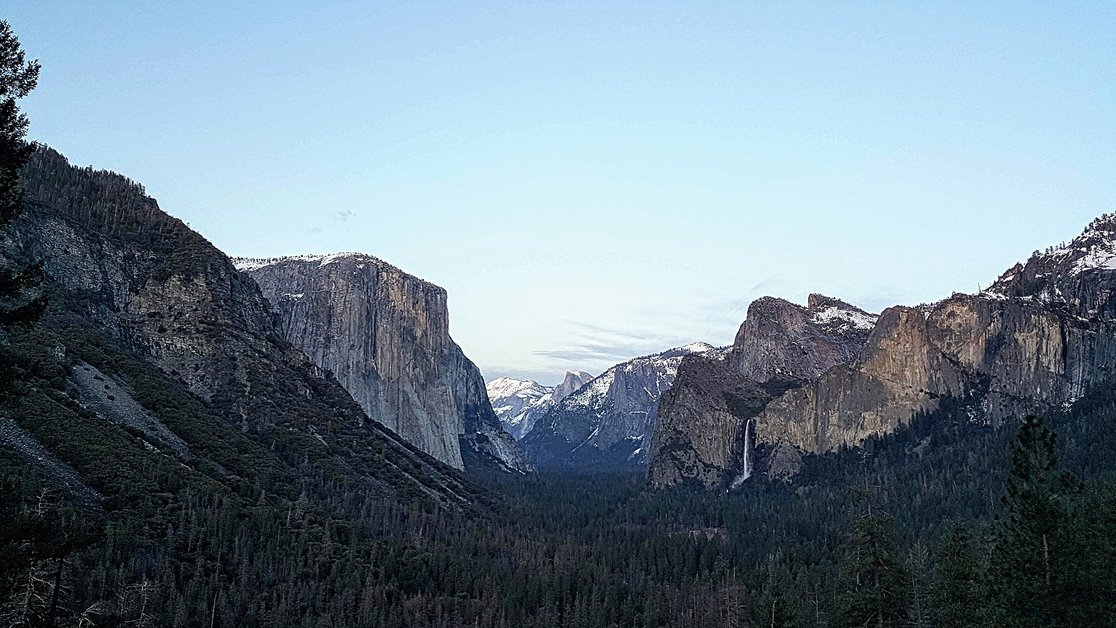
The warm glow of a Yosemite summer sunset
To cope with the heat:
- Carry plenty of water and extra supplies
- Wear lightweight, breathable clothing
- Plan rest stops in naturally shaded areas
Using our camper trailer at Thousand Trails Yosemite Lakes provided a cool refuge from the relentless sun. We also noted that waterfalls like Yosemite Falls and Bridalvail Fall lose much of their power in the summer, which can be disappointing. For additional travel tips on managing extreme conditions, you might enjoy our guide on Digital Nomading with a Dog—it offers advice on staying comfortable during unpredictable travel conditions.
Maintaining hydration, adjusting hiking times, and having a well-planned schedule make the heat more manageable, ensuring you still appreciate the park’s splendor despite summer extremes.
Understanding Wildfire Smoke and Unpredictable Weather Patterns
Wildfire smoke and sudden weather changes are common challenges in Yosemite during summer.
- Reduced air quality and hazy views
- Risk of flash flooding during unexpected storms
- Trail closures and last-minute itinerary changes
On our visit, wildfire smoke often obscured the clear blue skies, turning our day into a battle for fresh air. We encountered reduced visibility at several of our favorite lookout points. It is essential to monitor local weather updates and plan ahead to avoid days with heavy smoke. Sudden thunderstorms also posed risks, with flash flooding emerging on some trails.

Lower Yosemite Falls amid changing weather conditions
Our checklist for tackling these challenges includes:
- Checking real-time weather forecasts at the National Park Service website
- Bringing masks or bandanas to filter smoke
- Setting flexible schedules to accommodate unexpected delays
Being prepared can turn a potential setback into a manageable inconvenience. For more advice on traveling during challenging weather, our article on Exploring Yosemite with Dogs offers additional practical insights.
- Stay updated with weather and smoke alerts
- Use park apps or local radio for immediate updates
- Have alternate plans ready in case trails are closed
By adopting a flexible approach and remaining informed, you can minimize the impact of unpredictable weather and continue to enjoy Yosemite’s breathtaking scenery.
Limited Wildlife Sightings in Summer
One of the subtle disappointments we faced was the scarcity of wildlife during the summer months.
- Fewer animal sightings due to high temperatures
- Most wildlife is nocturnal or retreats to cooler areas
- Crowded areas may deter animal activity
Although Yosemite is known for its diverse fauna, the peak summer heat forces many animals to seek refuge in higher elevations or become active only at dawn or dusk. During our visit, we observed mainly deer and rarely any other wildlife, which contrasted sharply with the expectations that draw many visitors hoping to see bears or coyotes.
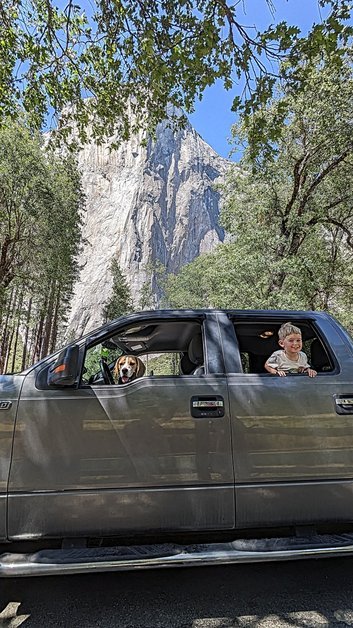
Our beagle and toddler enjoy the view, despite limited wildlife encounters
Tips to enhance wildlife viewing include:
- Plan early morning or late afternoon walks for a better chance to observe animals
- Visit less crowded areas where wildlife might feel safer
- Maintain a respectful distance to avoid disturbing natural behaviors
For additional insights on balancing human presence with nature, check out our post Why You Should Think Twice Before Visiting Yosemite National Park in Summer. While summer offers vibrant sunlight and clear views of Yosemite’s vast landscapes, the trade-off can be a quieter animal kingdom.
- Be patient and keep quiet to encourage wildlife activity
- Use binoculars to observe from a distance
- Research local tips on where animal sightings have been more frequent recently
Understanding these seasonal behaviors can help you set realistic expectations and adjust your schedule to enjoy both the scenery and any wildlife encounters that do occur.
Finding Accommodations and Camping Options at Yosemite
Securing a place to sleep is one of the more challenging aspects of visiting Yosemite in the summer.
- Campgrounds book up months in advance
- Options can be costly and limited
- Staying inside the park versus nearby facilities offers different experiences
During our trips, we stayed at Thousand Trails Yosemite Lakes with our camper trailer—a convenient choice that allowed us to enjoy the park with more flexibility. Inside the park, camping options fill up quickly and require long-term reservations. Hotels and lodges outside offer comfort but may drive up the overall cost of the trip.

Our family enjoying a camping experience in Yosemite
Key considerations for accommodations include:
- Booking well in advance to secure a preferred site
- Deciding between in-park camping and nearby lodges
- Checking cancellation policies and weather-related updates
Our experience taught us that having a pre-planned reservation helps avoid the stress of last-minute arrangements. Resources like Navigating Yosemite National Park with Dogs provide tips that are also useful when selecting pet-friendly accommodations. We recommend:
- Using online reservation systems early in the planning process
- Considering off-peak dates if your schedule allows
- Weighing the benefits of proximity versus price and availability
A clear, detailed itinerary combined with flexible planning can make your lodging experience much more enjoyable. Being aware of the limitations and requirements of each site will ensure a comfortable stay while you explore the magnificent Yosemite landscape.
Planning Your Yosemite Trip for a Stress-Free Experience
Yosemite has a one-way road around the valley and a main car park at teh Visitor’s Center, miss the turn off and you will have to do another slow lap around the valley. There are parallel parking spots on the side of the road on the valley loop.
A well-organized plan is the key to enjoying your time at Yosemite National Park without unnecessary stress.
- Start early and plan for peak and off-peak hours
- Have backup plans for weather or unexpected closures
- Utilize park resources and digital tools for real-time updates
We often rely on detailed itineraries to guide our trips. Our planning includes setting an early start time, mapping out less crowded routes, and knowing alternative sites to visit if one area becomes overwhelming. Using digital tools and internal resources like Exploring Yosemite with Dogs has helped us streamline our trips.
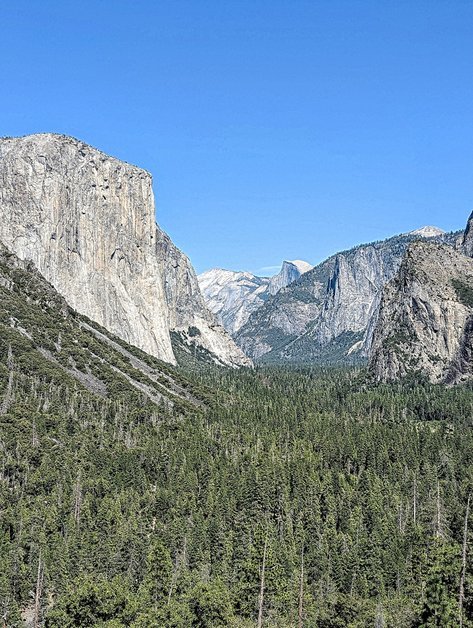
A well-planned route offers scenic detours
Our planning strategy involves:
- Checking park alerts, weather updates, and possible trail closures before departure
- Identifying main attractions and then outlining alternate routes
- Creating a checklist for essential items such as water, first aid, and snacks
| Activity | Time Slot | Backup Plan |
|---|---|---|
| Morning hike | 6:00 AM – 8:00 AM | Explore a nearby paved trail |
| Picnic in a quiet area | 12:00 PM | Use a designated rest stop |
| Evening drive | 4:00 PM – 6:00 PM | Switch to alternative viewpoint |
These planning methods are simple yet effective. They help reduce stress and make your visit to Yosemite National Park as smooth as possible. For more detailed travel tips on similar road trips, consider our guide on How to Plan Cross-Country Road Trips Across Australia.
Making the Most of an Off-Season Visit
Experiencing Yosemite National Park during the off-season can be a game changer.
- Reduced crowds and greater solitude
- Cooler temperatures and more vibrant waterfalls
- Opportunity to explore trails and backcountry areas safely
If the summer heat and crowds are too much, consider planning your visit for spring or fall. Off-season visits offer a different kind of magic. In the spring, wildflowers bloom and waterfalls flow in full force. Fall brings crisp air and colorful foliage, making every vista breathtaking. Our own trips during these shoulder seasons have been some of the most memorable.

Off-season colors enhance Yosemite’s charm
Benefits of off-season visits include:
- Enjoying nature at a more relaxed pace
- Better access to popular trails without endless queues
- More opportunities to experience the full power of Yosemite’s waterfalls and meadows
Planning your trip during these times requires a bit of flexibility, but the rewards can be significant. You might even have more opportunities to engage in quiet reflection and immerse yourself in the natural beauty—whether with your family, your beagle, or even on a solo retreat. Our experience shows that patience in planning can lead to a truly rewarding escape. For further reading on managing travel during busy seasons, our article Why You Should Think Twice Before Visiting Yosemite National Park in Summer provides additional tips.














FAQ
Q1: When is the best time to visit Yosemite National Park?
A1: Many visitors find spring and fall to be ideal for fewer crowds, milder temperatures, and more vibrant natural displays.
Q2: What are the challenges of visiting Yosemite in the summer?
A2: Summer challenges include heavy crowds, extreme heat, diminished waterfall flows, wildfire smoke, and unpredictable weather.
Q3: How can I navigate the heavy traffic and crowded parking areas?
A3: Arrive early, plan alternative routes, and use park shuttles or digital tools for real-time updates to ease congestion.
Q4: Are there affordable camping options in Yosemite?
A4: Yes, sites like Thousand Trails Yosemite Lakes offer camper-friendly options, but reservations need to be made well in advance.
Q5: What safety precautions should I take during a summer visit?
A5: Carry enough water, wear appropriate clothing, monitor weather conditions, and have backup plans in case of sudden changes like thunderstorms or trail closures.
Q6: How does off-season travel compare to summer visits?
A6: Off-season visits offer more tranquility, vibrant nature displays, and safer hiking conditions, with fewer crowds to navigate.
Q7: Is there a BARK ranger program at Yosemite?
A7: No, unfortunately there is no BARK ranger program at Yosemite National Park.
Q8: Is there a Junior Ranger badge at Yosemite?
A8: Yes, grab a workbook from the ranger at the Visitors’ Center and return it for a Junior Ranger badge.

